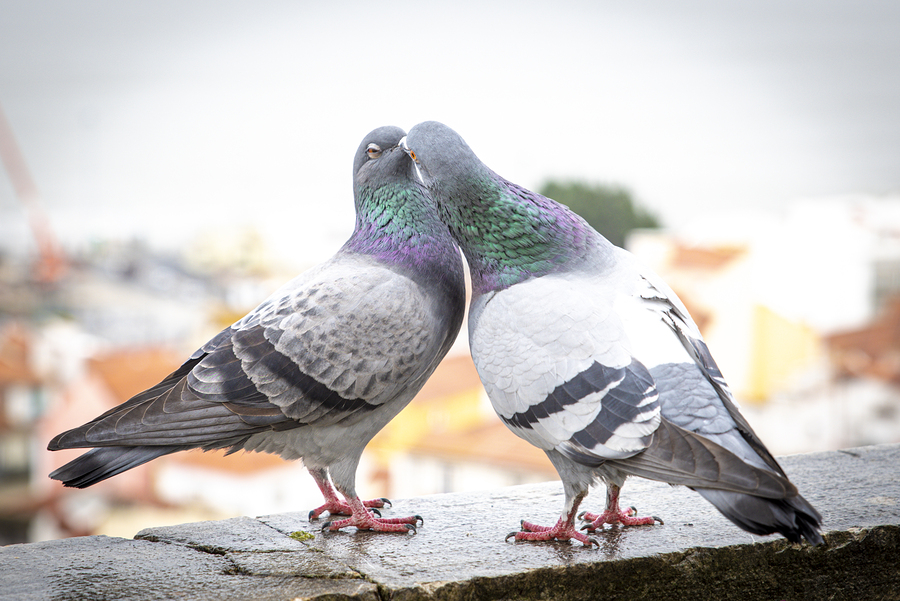
I think some of the best fun time of keeping pigeons is spending the winter evenings with a warming drink poring over pedigrees of your birds with all the notes you have made of their breeding record, performances, age, sex, temperament and conformation. Then ‘paper pairing’ pairs of birds with one thought in your mind to breed the next champion. I regularly change my mind but this does not matter to much to me as I very rarely plan to physically ‘pair up’ until the New Year and I enjoy theorising about the outcomes of certain pigeons mated with each other or the impact of a new introduction with certain outstanding qualities on my flock. .
There are always some pairs that have produced good performance pigeons so these I can leave together. So they can be marked in my book and parked until the New Year.
I am not in a hurry to increase my breeding stock so I really have to be objective about what in my stock loft does not warrant a perch in light of my future plans, whether
a) I have some exceptional racers that are getting near the end of their racing career who have bred some good youngsters that fit my perfect blue print and have earned a chance in the stock loft, or
b) I have an opportunity to bring in some truly exceptional birds that fit my blueprint I think will improve my lofts performances.
As soon as you have separated your pigeons or even before one should be thinking about the future. If you are winning one should still look to improve, if you are not doing as well as you would like to then one should pay even more attention to what you are breeding to race as well as your environment, training and feeding regimes.
Let us look at pairing birds that have not mated together before. Let us start well before the planned mating date. Take the proposed pair and put them alone in a large open area say a isolation section or large aviary (my aviaries are 3m x 2m x 2m) with a number of well spaced perches. Do NOT put them in a confined space the cock may be to aggressive and beat up on the Hen. The hen in a large aviary can fly from perch to perch and escape the attentions of the cock as long as she wants to, leave them together for 1/2 day to 1day. Use the Aviary of spare section to acquaint other pairs. This is the ‘Introduction Stage’ they are unlikely to pair up at this stage due to the weather temperature and the short time together but they will become acquainted and flying up and down will help them keep in shape. I would then put the cock and hen back into their separate sections. The cock I ideally want in the section where he has claimed a perch in front of ‘his nest box’. I would try the ‘Introduction Stage’ once a week if I have the time and space with the key birds where I really have planned and want them mated together. When the time approaches for mating and after a few times in the Aviary, I put the hen in the cocks chosen nest box and lock her in so the cock can see her but cannot get to her. The cock will stand outside trying to get to the hen and displaying to her, try this for a few hours at a time ending by putting the hen back into her section. When you see the hen responding put them both in the aviary to confirm your opinion that they are ready to mate. when they are ready put the hen in the cocks chosen nest box with the door open and keep an eye on them to ensure the cock is not too aggressive and they are compatible. If they are not then repeat the procedure again. If you time it right you can get all important pairs ready to mate at the same time and put the hens in the boxes on the same or subsequent days. Obviously those that have mated before will probably only need one session in the aviary whereas others will need more of your patience. I personally am pretty relaxed once I have my key pairs mated I can repeat the above system with other pairs and if they are able to be released i.e. not prisoners I just let a pair out of the loft on their own and let the cock chase the hen around the sky as nature intended. I also have a number of pairs that I am happy to let them have a ‘love match’ and choose their own mate. These I let loose as a small flock or in two, four or six at a time. These I am going the race or use as feeders, so how they are matched is not critical to my breeding plans and I like to see them flying about and gradually conditioning themselves after the winter. I feel the hen especially needs to lose weight and get in condition before she lays eggs and rears young. I hope this article interest you and please write in with your views and experiences.

Leave a Reply
You must be logged in to post a comment.